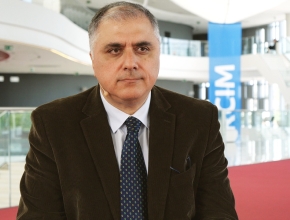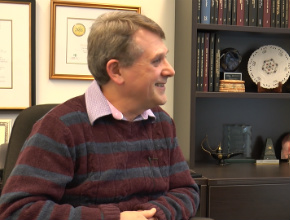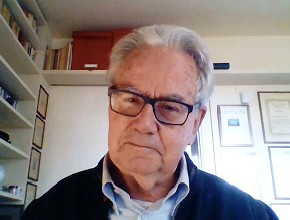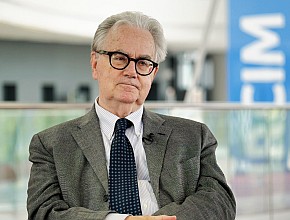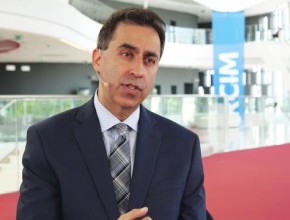Jerzy Gąsowski: Franz, it is good to have you with us again. We have got a couple of questions.
Franz H. Messerli: I am delighted to be here, Jurek, so go ahead.
Jerzy Gąsowski: Both you and I are proponents of the notion that when we face an elderly patient, especially with isolated systolic hypertension and no other compelling indications, then the first-line medications to tackle the blood pressure problem would be either a long-acting dihydropyridine calcium channel blocker (CCB), or a thiazide, or better still, a thiazide-like diuretic. What evidence do we actually have to support these medications?
Franz H. Messerli: That is an excellent question. I agree entirely with you. Isolated systolic hypertension in the elderly is primarily an indication for a dihydropyridine CCB such as amlodipine, felodipine, nifedipine; or thiazide-like [diuretics] chlorthalidone (INN chlortalidone) or indapamide.
We do have 3 placebo-controlled, prospective, randomized trials attesting to that. The first one that came out is the Systolic Hypertension in the Elderly Program (SHEP): chlorthalidone-based therapy clearly showing not a mortality but a morbidity reduction and a substantial stroke reduction of about 36% against placebo.
The second trial is the Systolic Hypertension in Europe (Syst-Eur) trial. Dihydropyridine CCB-based therapy against placebo, again, in systolic hypertension in the elderly showed a 42% stroke reduction.
The third trial is indapamide-based therapy, the Hypertension in the Very Elderly Trial (HYVET). Again, it showed a substantial reduction of all-cause mortality as well as of stroke, and, particularly, also of heart failure, again against placebo.
Now, to my way of thinking, stroke remains the most devastating complication of hypertensive cardiovascular disease. Anything we can do to prevent it is important. As I showed today [see How to treat arterial hypertension in elderly people], we just did a meta-analysis showing that in the elderly above the age of 65, angiotensin-converting enzyme (ACE) inhibitors are not the agents of choice, they do not prevent stroke. Therefore, I would not start a patient on an ACE inhibitor in that age class.
Jerzy Gąsowski: Now that you touched upon the issue of the evidence for the CCBs, in passing you mentioned nifedipine. Perhaps it is worth the while to mention that what you probably had in mind is the long-acting nifedipine and not the short-acting one.
Franz H. Messerli: That is a very good point because we have shown and published in the Journal of the American Medical Association (JAMA) together with our Polish friend, Tomek Grodzicki, that actually short-acting nifedipine as it used to be given—and unfortunately, still in some corners of the world is given—for so-called hypertensive emergencies is complete nonsense therapy. It should never have been done. It was given sublingually. Blood pressure drops and some patients actually do have heart attacks, strokes, and even fatalities. That should not be used for the treatment of high blood pressure. It has never been approved by the Food and Drug Administration (FDA) for the treatment of high blood pressure, whereas the long-acting nifedipine, the extended release (XL) formulation or the coat-core (CC) formulation, is perfectly safe and acceptable.
Jerzy Gąsowski: You mentioned the 3 trials. There was yet another, the Systolic Hypertension in China (Syst-China) trial, although that used alternate allocation so not all the people would believe in the results, although they corroborate the results of Syst-Eur.
When it comes to diuretics, we both agree that the thiazide-likes, so chlorthalidone or indapamide, would be preferred, but would I be wrong to say that if you had no other option, you would also use other thiazide diuretics?
Franz H. Messerli: Well, I am a bit reluctant to use… OK, let me put it this way. For hydrochlorothiazide in the dose of 12.5 to 25 mg we have no outcome data. This has never been shown to reduce morbidity and mortality neither stroke nor heart attack in hypertension. High doses, like 100 to 200 mg, as was used in the Veterans Affairs (VA) trials years and years ago, may be—I am off in that area a little bit—may be acceptable but certainly not in the currently used common doses of 12.5 to 25 mg. This, again, will not be my first choice. I would much prefer something like chlorthalidone and indapamide—and indapamide also in the sustained release (SR) formulation, that is important.
Jerzy Gąsowski: Recently, there has been much talk about the results of the Systolic Blood Pressure Intervention Trial (SPRINT). Actually, both of us should disclose that we are not especially convinced by the trial, but hence my next question. What say you about this notion that for everyone, irrespective of age, there should be this push towards 120 mm Hg?
Franz H. Messerli: It sounds revolutionary, right? It stirred the leaves in the hypertension teapot quite a bit. But then when you analyze the data, the most important thing is how the blood pressure was measured in the SPRINT. It was measured unwitnessed, the patient was in the room, nobody else was there, alone. They had an automatic blood pressure monitor on that started after a certain time of rest and automatically measured the blood pressure. If you do that, and that has been shown time and again, the results are about 10 to 12 mm Hg systolic blood pressure and 5 to 8 mm Hg diastolic blood pressure lower than office blood pressure. First of all, the practicing physician has no time to have a patient sit in a room for 10 to 15 minutes and to wait. Second, he or she does not have the equipment. And third, you do not want to extrapolate blood pressure to the office blood pressure. For all these reasons, I think SPRINT data are just not very valid for the practice of medicine.
Jerzy Gąsowski: Recently, you have also published a network meta-analysis looking at the ideal blood pressure goal after the SPRINT and you found this out to be at about 130 mm Hg, which is in accordance with a recently published paper in Hypertension, which is a reanalysis of the on-treatment, more than 10 years of observation—probably the longest follow-up of the International Verapamil-Trandolapril Study (INVEST) that shows pretty much the same value. Is that what we should recommend to everybody then?
Franz H. Messerli: No. I will never make a recommendation that a blood pressure, regardless of whatever level, is good for every patient because it really depends on the patient individually. If the patient is a healthy 85-year-old, he or she may tolerate a blood pressure of 125/70 mm Hg on triple medication. That is entirely possible. If it is a fragile 62-year-old who has diabetes, vascular disease, had already 2 cerebrovascular accidents (CVAs) and transient ischemic attack (TIAs), etc, he or she may not tolerate a systolic blood pressure below 150 mm Hg, regardless of what the guidelines say. We really, really need to take…
Jerzy Gąsowski: The biology is what decides.
Franz H. Messerli: Absolutely.
Jerzy Gąsowski: OK, Franz, that was a pleasure. Thank you so very much.
Franz H. Messerli: Delighted. Thanks, Jurek, for having me.
 English
English
 Español
Español
 українська
українська

